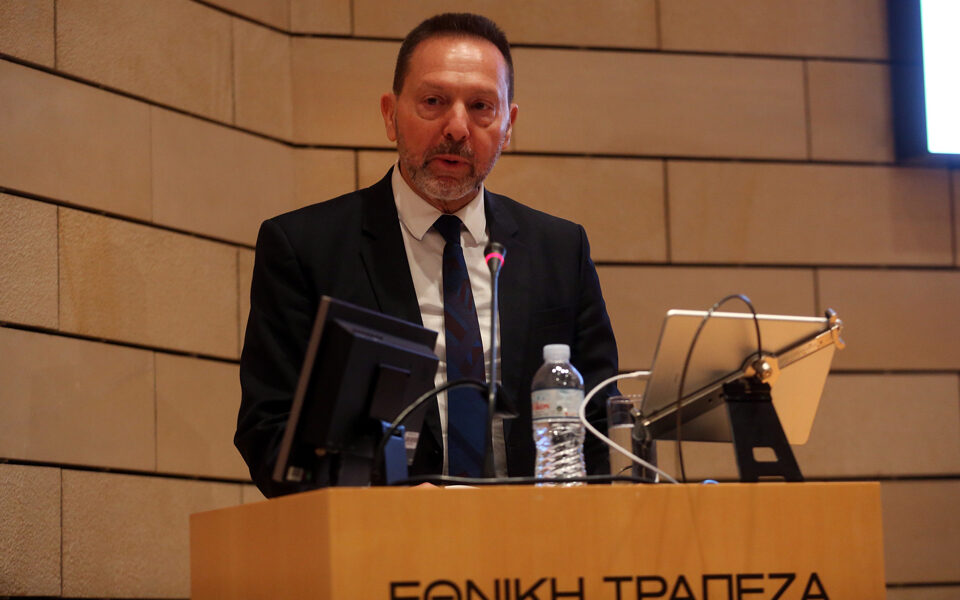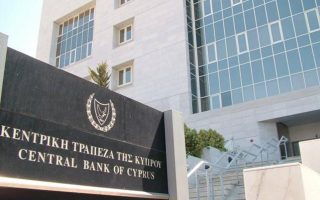Stournaras sees ECB rate cut this summer

Bank of Greece Governor Yannis Stournaras has told Kathimerini he expects the European Central Bank to start reducing interest rates this summer, as inflation is easing much faster than expected.
Although ECB President Christine Lagarde’s statements at a press conference on Thursday were “translated” by the markets as being less “aggressive” about a possible start of the easing cycle, even in the spring, the Greek central banker, who is also an ECB Governing Council member, believes that as of June the ECB will be ready to make a move.
Stournaras, who about six months ago said that the ECB would be ready to cut interest rates when inflation drops to close to 3%, is sticking to his position. “The news is good on the inflation front, and if this trend continues then we will be able to start reducing interest rates after the end of the year’s first half,” he noted to Kathimerini.
In relation to the December ECB staff forecasts, developments show that inflation is falling and, if this continues, nominal inflation is expected to have fallen to 2% by early fall, many months earlier. It is noted that according to the latest estimates of Eurosystem experts, nominal inflation would average 2.7% in 2024, 2.1% in 2025 and 1.9% in 2026.
Figures on the wage front have not yet reached the point of being consistent with the medium-term inflation target of 2% (wage growth is at 5%), but the picture has improved as there no longer seems to be pressure on businesses to raise prices.
As Lagarde noted on Thursday, the ECB would like to see more evidence that wages and unit labor costs are falling before cutting interest rates. But she admitted there is some evidence that companies are absorbing rising wages through falling profit margins.
At the same time, growth doesn’t appear to be keeping up with the December forecasts, and it is possible that the eurozone will show zero growth for 2023. As the president of the ECB noted, the economy probably showed stagnation in the fourth quarter while incoming data continues to signal sluggishness in the short term. This is essentially “good” for inflation.
Therefore, the ECB staff’s new forecasts in March may lead the bank to change its rhetoric on interest rates (it is noted that the Governing Council currently considers that “the discussion about rate cuts is premature”). This, combined with more data expected from wages in the months ahead and into the summer, paves the way for the ECB to begin tapering from mid-year.
Markets, however, raised their stakes on Friday, both on the size of interest rate cuts this year and on the possibility that the first cut will come in April. In particular, they estimate that the reductions will reach 147 basis points in 2024 from 130 bps before the ECB meeting, while they give an 85% chance of a 25 bps rate cut in April, from 60% before.
Colleagues of Stournaras at the ECB, however, rushed on Friday to rebuff the market’s expectations for an easing of the tightening cycle soon.
Croatia’s central banker, Boris Vušić, told Bloomberg TV that the ECB had not changed its stance to “soft” on interest rates, contrary to what markets had “translated.”
At the same time, his Latvian counterpart, Martins Kazaks, stated that the biggest mistake would be to reduce interest rates too soon. Although “they should start to come down,” barring a major shock, the ECB should not be in a rush to start the process, he said.
“That would be a lot worse than waiting a while. We have seen since the 70s and 80s that if the easing starts too early, there is a risk that inflation will start to return and then interest rates will have to rise much more,” the Latvian central banker noted.





